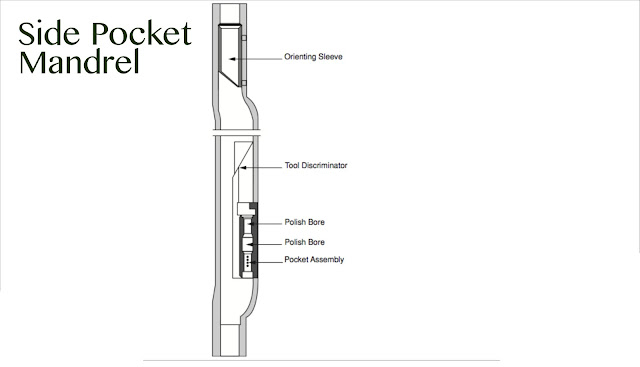Artifical Lift Techinque : Sucker ROD PUMPS
Introduction
(Sucker) rod or beam pump was the first type of artificial lift to be introduced to the oil field. It is also the most widely used in terms of the number of installations world wide. In 1993, some 85% of the USA population of artificially lifted wells was produced by rod pumps and more than 70% of these produced less than 10 barrels of oil per day. The low cost, mechanical simplicity and the ease with which efficient operation can be achieved makes rod pumps suitable for such low volume operations. Rod pumps can lift moderate volumes (1,000 bfpd) from shallow depths (7,000 ft) or small volumes (200 bfpd) from greater depths (14,000 ft). They are normally manufactured to standards set by the American Petroleum Institute (API). This means that, unlike other artificial lift methods, the equipment manufactured by the various supplies is fully interchangeable.
The Pumping Unit
The surface equipment for a rod pump is illustrated in Figure 1. The prime mover, normally an electric motor or gas engine, drives a speed reducing set of gears so that its fast rotation, of say 600 revolutions per minute, is reduced to as low as 20 strokes per minute or less. The connection between the surface pumping unit and the downhole pump is the polished rod and the sucker rods. The polished rod moves up and down through a stuffing box mounted on top of the wellhead. This stuffing box seals against the polished rod and prevents surface leaks of the liquids and gasses being produced by the well.
The Sucker Rods
The sucker rods, typically 25 ft long, are circular steel rods with diameters between 0.5 in and 1.125 in, in increments of 0.125 in. A threaded male connection or pin is machined at each end of the rod. The two rods can be joined together by use of a double box coupling (Figure 2). Square flats are machined near the pins and at the centre of the coupling to provide a grip for a wrench to allow the rods and couplings to be screwed together. The sucker rods are subjected to continuous fatigue when the pump is in operation. The weight of the rod string is one component of this fatigue load - it can be minimised by using a tapered sucker rod string. This involves installing lighter, smaller diameter rods lower down in the well where the load they have to support (weight of rods and fluid in the tubing string) is less than at the top of the well.
The Pump
The pump is located near the perforations at the bottom of the string of sucker rods. Figure 3 shows that it consists of a hollow plunger with circular sealing rings mounted on the outside circumference moving inside a pump barrel which is either inserted into the tubing or is part of the tubing itself. A standing valve is mounted at the bottom of the pump barrel while the travelling valve is installed at the top of the plunger. The standing and travelling valves consist of a ball which seats (closes off)
an opening.
The “UP” and “DOWN” movement of the pump barrel allows the fluid flow to open and shut these valves as shown in Figure 3. The left hand schematic shows the plunger status at the end of the “DOWN” stroke. The "Upward" rod movement reduces the pressure within the pump barrel and the upward flow of fluid from below the pump lifts the standing valve’s ball off its seat. The pressure due to the fluid column above the plunger keeps the travelling valve ball on its seat. The situation is reversed during the “DOWN” stroke - compression of fluid within the pump barrel forces it to flow through the hollow plunger and to lift the travelling valve off its seat; while ensuring that the standing valve remains closed.























































